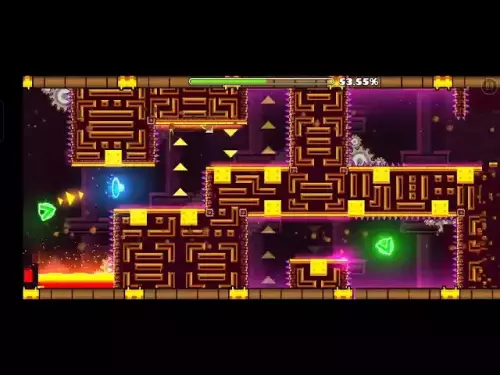-
 bitcoin
bitcoin $109547.008142 USD
0.04% -
 ethereum
ethereum $4011.838726 USD
-0.05% -
 tether
tether $1.000402 USD
-0.01% -
 xrp
xrp $2.798606 USD
0.88% -
 bnb
bnb $970.877944 USD
1.39% -
 solana
solana $202.237275 USD
-0.95% -
 usd-coin
usd-coin $0.999673 USD
0.00% -
 dogecoin
dogecoin $0.229294 USD
-1.15% -
 tron
tron $0.336370 USD
-0.45% -
 cardano
cardano $0.777260 USD
-1.66% -
 hyperliquid
hyperliquid $45.503019 USD
1.73% -
 ethena-usde
ethena-usde $1.000362 USD
0.01% -
 chainlink
chainlink $20.785303 USD
-1.10% -
 avalanche
avalanche $28.755822 USD
-0.11% -
 stellar
stellar $0.358303 USD
-0.48%
How to read cryptocurrency charts and use technical analysis?
Candlestick charts reveal crypto price movements with key patterns and indicators like RSI, MACD, and Bollinger Bands aiding in predicting trends and reversals.
Aug 08, 2025 at 11:08 am

Understanding the Basics of Cryptocurrency Charts
Cryptocurrency charts are graphical representations of price movements over time. These charts are essential tools for traders who rely on technical analysis to make informed decisions. The most common chart types used in crypto trading are line charts, candlestick charts, and bar charts. Among these, candlestick charts are the most widely used due to their rich visual information. Each candlestick represents a specific time period and displays four key data points: the opening price, closing price, highest price, and lowest price during that interval. The body of the candle shows the range between the open and close, while the wicks (or shadows) indicate the high and low. A green candle typically means the closing price was higher than the opening price, signaling upward momentum, whereas a red candle indicates a decline.
Identifying Key Chart Patterns
Chart patterns are recurring formations that help traders predict future price movements. Recognizing these patterns is a core component of technical analysis. Common patterns include head and shoulders, double tops and bottoms, triangles, and flags. A head and shoulders pattern, for instance, consists of three peaks, with the middle peak (the head) being the highest. This formation often signals a reversal from an uptrend to a downtrend. Conversely, an inverse head and shoulders suggests a potential upward reversal. Symmetrical triangles form when the price converges between upward-sloping support and downward-sloping resistance lines. A breakout in either direction can indicate the start of a new trend. Traders watch for volume confirmation during breakouts to validate the pattern’s reliability.
Using Technical Indicators Effectively
Technical indicators are mathematical calculations based on price, volume, or open interest. They help traders assess market conditions and anticipate future movements. Popular indicators include the Relative Strength Index (RSI), Moving Averages (MA), Moving Average Convergence Divergence (MACD), and Bollinger Bands. The RSI measures the speed and change of price movements on a scale from 0 to 100. An RSI above 70 typically indicates overbought conditions, suggesting a potential pullback, while an RSI below 30 suggests oversold conditions, hinting at a possible rebound. Moving averages smooth out price data to identify trends. A 50-day MA crossing above a 200-day MA is known as a “golden cross” and is viewed as a bullish signal. The MACD plots the relationship between two moving averages and generates buy or sell signals when the MACD line crosses the signal line. Bollinger Bands consist of a middle MA and two standard deviation bands. Prices near the upper band may be overbought, while those near the lower band may be oversold.
Setting Up a Chart Analysis Workspace
To conduct thorough technical analysis, setting up a proper workspace is crucial. Most traders use platforms like TradingView, Binance, or CoinGecko for charting. Begin by selecting the cryptocurrency pair you want to analyze, such as BTC/USDT. Choose the preferred time frame—options range from 1-minute to monthly charts. Shorter time frames suit day traders, while longer frames benefit swing or position traders. Overlay desired indicators from the platform’s toolbar. For example, to add RSI, click “Indicators,” search for RSI, and apply it to the chart. Adjust settings like period length (default is 14 for RSI) to fine-tune sensitivity. Use drawing tools to mark support and resistance levels, trendlines, or Fibonacci retracements. Save your layout so you can quickly reload it for future sessions. Ensure volume is visible beneath the price chart, as increasing volume during breakouts adds credibility to the move.
Applying Support and Resistance Levels
Support and resistance are foundational concepts in technical analysis. Support is a price level where a cryptocurrency tends to stop falling and may reverse upward due to increased buying interest. Resistance is a level where selling pressure typically overcomes buying, causing the price to stall or reverse downward. These levels are identified by observing historical price points where reversals frequently occur. To draw them, use the horizontal line tool on your charting platform and connect at least two prior lows for support or highs for resistance. The more times price touches a level without breaking it, the stronger it becomes. When the price breaks through a resistance level with strong volume, that level may become new support. Conversely, a break below support can turn it into resistance. Traders often place stop-loss orders just below support or above resistance to manage risk.
Practicing Risk Management with Technical Signals
Even the most accurate technical signals carry risk. Proper risk management ensures long-term survival in trading. One method is to use position sizing, where you only risk a small percentage of your capital—commonly 1% to 2%—on any single trade. Combine technical signals with stop-loss and take-profit levels. For example, if a bullish engulfing candle forms at a support level with rising RSI, enter a long position. Set a stop-loss just below the support and a take-profit at the next resistance level. Use trailing stops to lock in profits if the price continues moving favorably. Avoid trading based on a single indicator; instead, look for confluence—when multiple signals align, such as a breakout occurring at a Fibonacci level with high volume and RSI exiting oversold territory. This increases the probability of a successful trade.
Frequently Asked Questions
What time frame should I use for day trading cryptocurrencies?For day trading, 5-minute, 15-minute, and 1-hour charts are commonly used. The 15-minute chart often provides a balanced view of short-term trends without excessive noise. Scalpers may use 1-minute or 3-minute charts, but these require rapid decision-making and are more sensitive to market volatility.
How do I know if a support or resistance level is strong?A level is considered strong if the price has tested it multiple times without breaking through. Additionally, high trading volume at the level increases its significance. Psychological price levels, such as $30,000 for Bitcoin, also tend to act as strong support or resistance due to widespread market attention.
Can technical analysis predict exact price points?Technical analysis does not provide exact price predictions. It offers probabilities and potential turning points based on historical patterns and market behavior. Traders use it to identify high-probability setups, but unexpected news or macroeconomic events can disrupt technical patterns.
Is it necessary to use all technical indicators at once?No. Using too many indicators can lead to analysis paralysis and conflicting signals. It’s better to select a few complementary tools—such as RSI for momentum, moving averages for trend direction, and volume for confirmation—and master their use in combination.
Disclaimer:info@kdj.com
The information provided is not trading advice. kdj.com does not assume any responsibility for any investments made based on the information provided in this article. Cryptocurrencies are highly volatile and it is highly recommended that you invest with caution after thorough research!
If you believe that the content used on this website infringes your copyright, please contact us immediately (info@kdj.com) and we will delete it promptly.
- Cheap AI Coding Revolution: Gemini 2.5 and the 1 Million Token Dream
- 2025-09-28 20:25:16
- Tether, Circle, and Competition: A Stablecoin Showdown in 2025
- 2025-09-28 20:25:16
- Layer Brett vs. Cardano: A Price Prediction Face-Off for 2025
- 2025-09-28 20:30:03
- Crypto Presale Alert: Unveiling the 500x Potential New Coins of 2025
- 2025-09-28 20:30:03
- Bitcoin Volatility, Whales, and Market Stir: What's the Deal?
- 2025-09-28 20:30:03
- XRP, Ripple, Price Prediction: Decoding the Crypto Crystal Ball
- 2025-09-28 21:05:12
Related knowledge

Practical parameter settings for a Bitcoin multi-timeframe moving average system
Sep 18,2025 at 10:54pm
Optimizing Timeframe Combinations for Bitcoin Trading1. Selecting appropriate timeframes is crucial when building a multi-timeframe moving average sys...

How can I filter out false breakouts in Dogecoin high-frequency trading?
Sep 22,2025 at 01:00am
Understanding False Breakouts in Dogecoin Trading1. A false breakout occurs when Dogecoin's price appears to move beyond a defined support or resistan...

Techniques for identifying tops and bottoms in the Bitcoin on-chain NVT model
Sep 20,2025 at 07:54pm
Understanding the NVT Model in Bitcoin Analysis1. The Network Value to Transactions (NVT) ratio is often described as the 'P/E ratio' of the cryptocur...

What does the surge in open interest in Bitcoincoin futures mean?
Sep 20,2025 at 11:18pm
Understanding the Surge in Dogecoin Futures Open Interest1. A surge in open interest within Dogecoin futures indicates a growing number of active cont...

How can I use the Ethereum USDT premium to gauge market sentiment?
Sep 18,2025 at 11:55pm
Understanding the Ethereum USDT Premium1. The Ethereum USDT premium refers to the price difference between USDT (Tether) traded on Ethereum-based plat...

What should I do if Ethereum staking yields decline?
Sep 20,2025 at 06:18am
Understanding the Causes Behind Declining Ethereum Staking Yields1. The Ethereum network transitioned to a proof-of-stake consensus mechanism with the...

Practical parameter settings for a Bitcoin multi-timeframe moving average system
Sep 18,2025 at 10:54pm
Optimizing Timeframe Combinations for Bitcoin Trading1. Selecting appropriate timeframes is crucial when building a multi-timeframe moving average sys...

How can I filter out false breakouts in Dogecoin high-frequency trading?
Sep 22,2025 at 01:00am
Understanding False Breakouts in Dogecoin Trading1. A false breakout occurs when Dogecoin's price appears to move beyond a defined support or resistan...

Techniques for identifying tops and bottoms in the Bitcoin on-chain NVT model
Sep 20,2025 at 07:54pm
Understanding the NVT Model in Bitcoin Analysis1. The Network Value to Transactions (NVT) ratio is often described as the 'P/E ratio' of the cryptocur...

What does the surge in open interest in Bitcoincoin futures mean?
Sep 20,2025 at 11:18pm
Understanding the Surge in Dogecoin Futures Open Interest1. A surge in open interest within Dogecoin futures indicates a growing number of active cont...

How can I use the Ethereum USDT premium to gauge market sentiment?
Sep 18,2025 at 11:55pm
Understanding the Ethereum USDT Premium1. The Ethereum USDT premium refers to the price difference between USDT (Tether) traded on Ethereum-based plat...

What should I do if Ethereum staking yields decline?
Sep 20,2025 at 06:18am
Understanding the Causes Behind Declining Ethereum Staking Yields1. The Ethereum network transitioned to a proof-of-stake consensus mechanism with the...
See all articles









































































